Aditya Sagi
Open Arms: Open-Source Arms, Hands & Control
May 20, 2022



Abstract:Open Arms is a novel open-source platform of realistic human-like robotic hands and arms hardware with 28 Degree-of-Freedom (DoF), designed to extend the capabilities and accessibility of humanoid robotic grasping and manipulation. The Open Arms framework includes an open SDK and development environment, simulation tools, and application development tools to build and operate Open Arms. This paper describes these hands controls, sensing, mechanisms, aesthetic design, and manufacturing and their real-world applications with a teleoperated nursing robot. From 2015 to 2022, we have designed and established the manufacturing of Open Arms as a low-cost, high functionality robotic arms hardware and software framework to serve both humanoid robot applications and the urgent demand for low-cost prosthetics. Using the techniques of consumer product manufacturing, we set out to define modular, low-cost techniques for approximating the dexterity and sensitivity of human hands. To demonstrate the dexterity and control of our hands, we present a novel Generative Grasping Residual CNN (GGR-CNN) model that can generate robust antipodal grasps from input images of various objects at real-time speeds (22ms). We achieved state-of-the-art accuracy of 92.4% using our model architecture on a standard Cornell Grasping Dataset, which contains a diverse set of household objects.
Robust Quadrupedal Locomotion on Sloped Terrains: A Linear Policy Approach
Nov 10, 2020
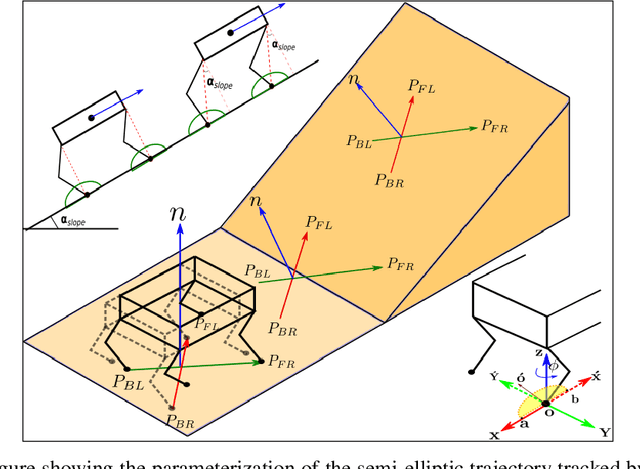
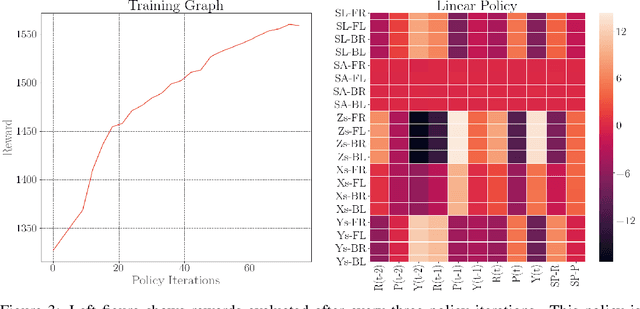
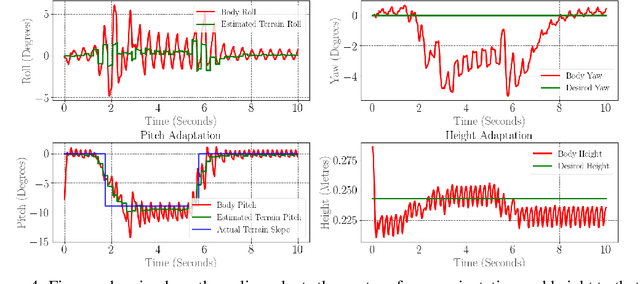
Abstract:In this paper, with a view toward fast deployment of locomotion gaits in low-cost hardware, we use a linear policy for realizing end-foot trajectories in the quadruped robot, Stoch $2$. In particular, the parameters of the end-foot trajectories are shaped via a linear feedback policy that takes the torso orientation and the terrain slope as inputs. The corresponding desired joint angles are obtained via an inverse kinematics solver and tracked via a PID control law. Augmented Random Search, a model-free and a gradient-free learning algorithm is used to train this linear policy. Simulation results show that the resulting walking is robust to terrain slope variations and external pushes. This methodology is not only computationally light-weight but also uses minimal sensing and actuation capabilities in the robot, thereby justifying the approach.
Learning Stable Manoeuvres in Quadruped Robots from Expert Demonstrations
Jul 28, 2020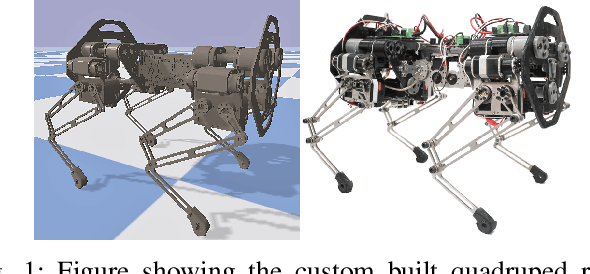
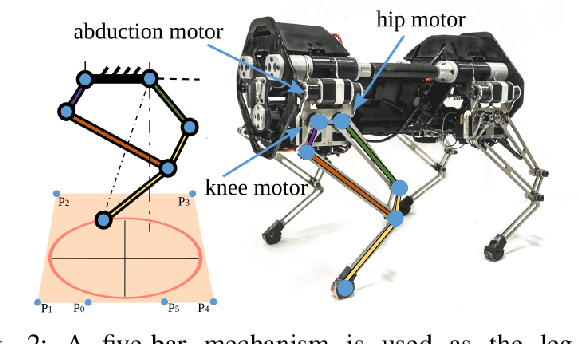
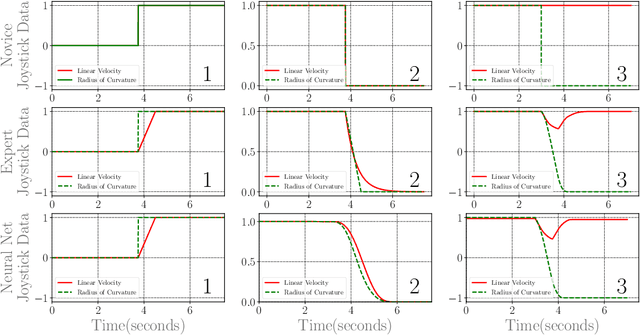
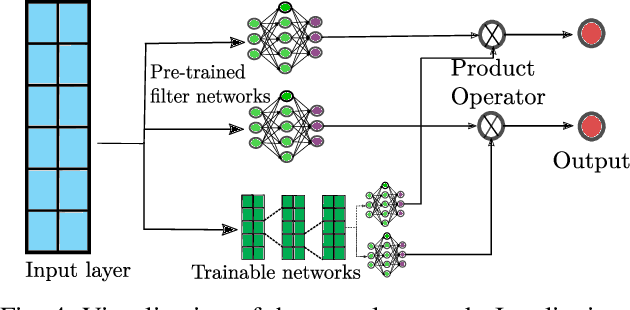
Abstract:With the research into development of quadruped robots picking up pace, learning based techniques are being explored for developing locomotion controllers for such robots. A key problem is to generate leg trajectories for continuously varying target linear and angular velocities, in a stable manner. In this paper, we propose a two pronged approach to address this problem. First, multiple simpler policies are trained to generate trajectories for a discrete set of target velocities and turning radius. These policies are then augmented using a higher level neural network for handling the transition between the learned trajectories. Specifically, we develop a neural network-based filter that takes in target velocity, radius and transforms them into new commands that enable smooth transitions to the new trajectory. This transformation is achieved by learning from expert demonstrations. An application of this is the transformation of a novice user's input into an expert user's input, thereby ensuring stable manoeuvres regardless of the user's experience. Training our proposed architecture requires much less expert demonstrations compared to standard neural network architectures. Finally, we demonstrate experimentally these results in the in-house quadruped Stoch 2.
Gait Library Synthesis for Quadruped Robots via Augmented Random Search
Dec 30, 2019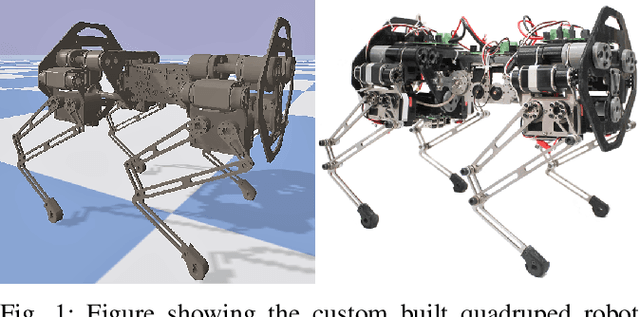
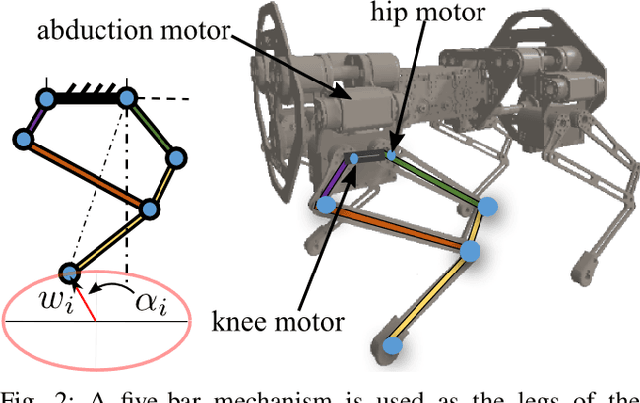
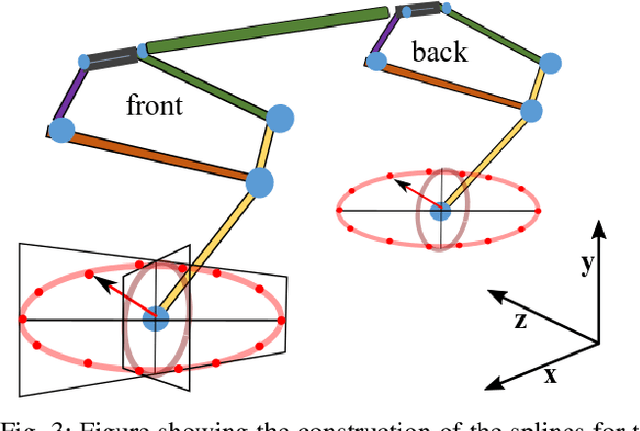
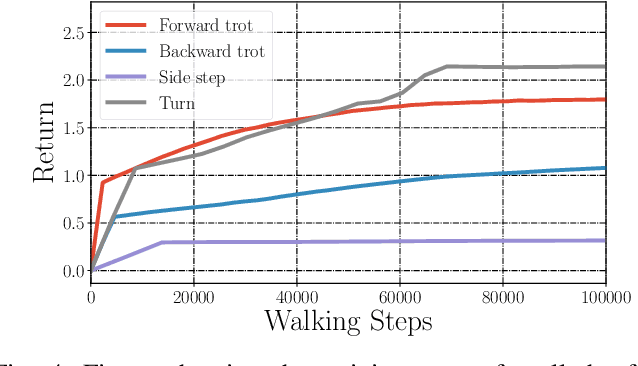
Abstract:In this paper, with a view toward fast deployment of learned locomotion gaits in low-cost hardware, we generate a library of walking trajectories, namely, forward trot, backward trot, side-step, and turn in our custom-built quadruped robot, Stoch 2, using reinforcement learning. There are existing approaches that determine optimal policies for each time step, whereas we determine an optimal policy, in the form of end-foot trajectories, for each half walking step i.e., swing phase and stance phase. The way-points for the foot trajectories are obtained from a linear policy, i.e., a linear function of the states of the robot, and cubic splines are used to interpolate between these points. Augmented Random Search, a model-free and gradient-free learning algorithm is used to learn the policy in simulation. This learned policy is then deployed on hardware, yielding a trajectory in every half walking step. Different locomotion patterns are learned in simulation by enforcing a preconfigured phase shift between the trajectories of different legs. The transition from one gait to another is achieved by using a low-pass filter for the phase, and the sim-to-real transfer is improved by a linear transformation of the states obtained through regression.
 Add to Chrome
Add to Chrome Add to Firefox
Add to Firefox Add to Edge
Add to Edge